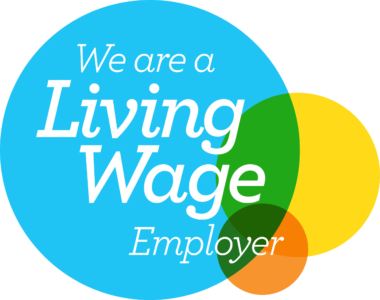According to its own figures1 HM Land Registry processed over 7.2 million applications to update its registers last year. It holds records to £7 trillion worth of property so it is understandable that anyone involved in land transactions would want to take an interest in its campaign to improve the efficiency of the property transfer process.
Enter, ‘Digital Street’ – HMLR’s pioneering project to modernise and transform the process by which transactions in land are conducted.
The Land Registry has teamed up with a technology company, digital ID specialists, a secure payment platform, lawyers and even HMRC to explore the benefits and viability of using Blockchain as the basis for completing and implementing property transactions.
This article explains how Blockchain works and looks at how it could transform conveyancing with its improved security benefits, as well as highlighting the obvious financial benefits of using this system, while acknowledging the hurdles to overcome.
What is Blockchain?
Since the birth of Bitcoin ten years ago, Blockchain has been the principal platform used to trade cryptocurrency.
Conventionally, a single trade is an end-to-end, linear and sequential transaction. Blockchain transforms the transaction in to a circular one, whereby all interested parties confirm and execute their part of the transaction simultaneously. An easy way to understand how this functions in practice is to think of the process as an electrical circuit.
Each party to the transaction is a component in the circuit. When they are able to confirm their readiness to complete their part in the transaction, and are satisfied that all other parties are similarly positioned, they actively enter the circuit to communicate this by programming their computer into the chain.
When each component joins the circuit, the chain is complete and digital ‘electricity’ flows, which allows the trade to proceed and all elements to transact simultaneously.
Only those who are party to the transaction are able to enter the circuit which prevents fraudulent imposters, and each procedural requirement is fulfilled immediately upon execution.
How could this be used for conveyancing?
‘Digital Street’ hopes to directly implement this procedure into transactions for land. While in the case of Bitcoin a unit of cryptocurrency changes hands between the virtual wallets of the parties involved in the transaction, that unit of currency will be substituted with the title to a plot of land.
Parties to the Blockchain will include the buyer and seller, any guarantor or lender, the Land Registry and HMRC, as well as any other party who may have an interest or role to play.
Only when each party has fulfilled their requirements and are satisfied that each of the others has fulfilled theirs, will they programme into the chain.
As with the example above, only those who are parties to the Blockchain will be able to join the chain, and at the point of completion all elements will execute simultaneously and almost instantly.
The effect of this is that the property will pass, completion monies are transferred, tax is paid and registration is completed and all formalities attended to within a matter of seconds.
Benefit from less delay
Condensing the numerous steps of a conveyance into one simultaneous manoeuvre would have the obvious beneficial effect of speeding up the entire process and eliminating some of the lag time between the steps of the transaction. The most evident example of this is the registration process itself at HMLR.
At present, following completion of a transaction, parties send to each other their part of the agreed documents, usually in the post. SDLT returns must be submitted along with the requisite funds. Only once the completed documents have been exchanged and the tax has been received by HMRC can registration then be applied for. Registration will then be actioned by HMLR at any time between a few days and several months from receipt of the application.
If you compare this current time line for completion to registration, to the Blockchain alternative where all elements are actioned instantaneously, the projected benefits are obvious.
Risks for buyers associated with third party interference will disappear along with any potential for missing deadlines for tax submission or for registering the disposition. Blockchain appears to facilitate certainty for all and ensures that no unforeseen costs arise post-completion.
Less time means less money
It is likely that the use of Blockchain will mean that consumers will need to seek assistance from a lawyer who is able to deal with these new software and technology requirements and has the requisite technical know-how. There is a danger that only those players who have already invested in technology platforms will be able to come to this party and this might reduce the number of available providers for consumers to choose from.
The net cost-effect on the market, however, is likely to be positive. While there will be a greater need for professional assistance, that assistance will be more limited in scope. A condensed process would lead to a more standardised legal service, and the time between receiving instructions to closing the file will be greatly shortened. This should in turn reduce legal costs.
Security
A key feature of Blockchain is that the chain will only complete when the parties to the transaction, (and only the parties to the transaction) program into the chain. This, in theory, makes it impossible for fraudulent third parties to enter into the Blockchain and misappropriate property, money or information.
The fact remains that the exchange of large sums of money along with a vulnerability to identity theft, make conveyancing a prime target for cybercrime. Land transactions have become renowned as one of the areas at highest risk from online fraudsters, leading to the term ‘Friday Afternoon Fraud’ being coined for the theft of conveyancing monies.
Blockchain technology promises to significantly reduce these risks due to the specific requirements in forming the chain. Nonetheless there are technical and public confidence issues to overcome if Blockchain is to really make it into the wider market as a viable way forward for conveyancing.
What challenges lie ahead?
Leaving aside the natural concerns that many will have regarding security for a ‘paperless’ process, there are other issues to overcome before this kind of technology could achieve wider use.
So far the pilot ‘transaction’ which the Land Registry replicated in the Digital Street project involved a single freehold residential property in Kent. There is still a long way to go before the technology can be used across the full spectrum of possible transactions which take place every day – whether from a legal perspective or otherwise. As a solution we may find that Blockchain becomes the norm in residential conveyancing but that more sophisticated commercial transactions are still dealt with in other ways.
No matter how clever the process becomes it’s important to bear in mind that there is a crucial element at play here that is entirely outside the control of a system, and that is the parties themselves. People can be motivated by all sorts of reasons to wish to delay or to press on with their transaction and it may be difficult to persuade them to buy into a system that will (to some extent) drive the process forward independently of their own agendas.
Finally there will be new areas of law to be applied and issues to be resolved. Who carries liability if something does go wrong? The operators of Blockchain technology will argue strongly that their system is simply a framework for transactions to proceed – it takes no part in actually making the deal happen. To use the earlier analogy, they provide the parts to build the circuit; they don’t control what is built or when the circuit goes live. So if the circuit is triggered in error whose fault will it be?
Summary
With increasing demands on the Land Registry, and heightened risks from cyber security, a modernised process for conveyancing is in demand. Blockchain’s innovative system appears to provide the answers, promising an efficient and ultimately cheaper form of conveyancing, while ensuring security.
Accounting for the challenging nature of more complex land transactions still represents a big problem, but whether this hurdle is surmountable is the primary question to be answered by Digital Street. How legislation reacts to such a formidable overhaul will be a subsequent challenge for Parliament; it remains to be seen whether this could lead to a radical legal reform of conveyancing laws.
This article is from the autumn 2019 issue of Room with a View, our newsletter aimed at professionals within the property industry. To download the latest issue, please visit the newsletter section of our website. Law covered as at November 2019.
To keep up-to-date with the latest news, legal updates and seminar information, please register and select the areas that are of interest to you.
The content of this article is for general information only. It is not, and should not be taken as, legal advice. If you require any further information in relation to this article please contact the author in the first instance. Law covered as at November 2019.







